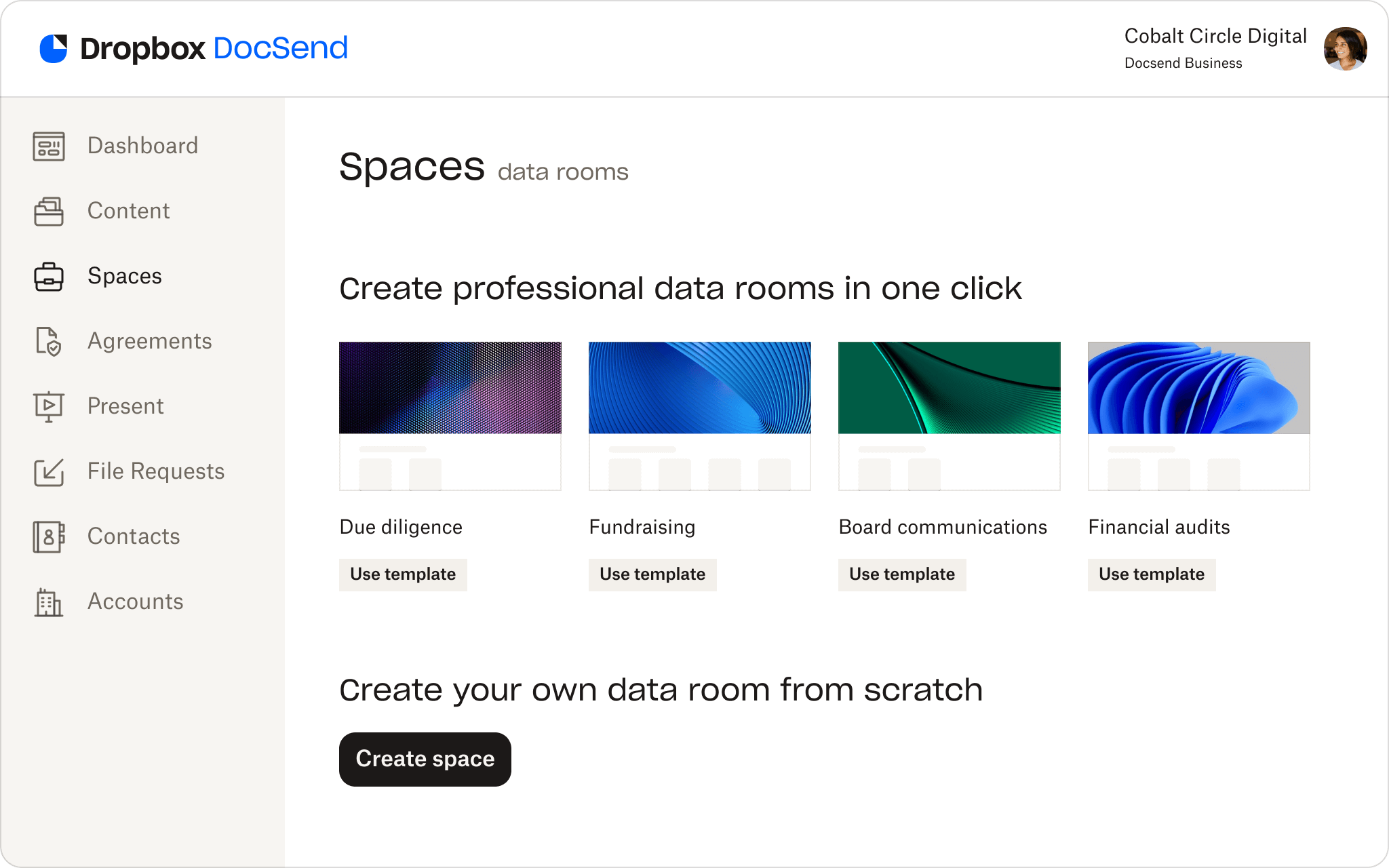Whether you’re working on mergers and acquisitions (M&As), carrying out due diligence processes, or fundraising from investors—large-scale business deals bring large-scale, highly sensitive data with them. Multiple stakeholders need to work with that data, without comprimising security.
So how do you store that data securely? Enter the virtual data room.
What is a virtual data room?
Picture this: A supercharged secret clubhouse for your confidential files and important documents. This is what a virtual data (VDR) room is like. Think of it as a digital fortress—but way more exciting.
Put simply, a virtual data room is a secure online space where you can bring together all of the people who need access to this data, enabling them to collaborate on top-secret projects and share sensitive information safely.
Your VDR “clubhouse” has everything you need at your fingertips. But, instead of a rope ladder and or zip line, it’s got powerful encryption and advanced access controls.
VDRs have all these high-tech features that make those invited in feel safe among confidential files and documents. VDRs are a feature of DocSend, providing an ideal way to:
- Upload and store your confidential files
- Secure your documents and data
- Organize your data in a systematized way
By using a VDR, you’ll be hanging out with the trusted allies of digital file and document management. It’s the best option for diligence, IPOs, and other confidential projects.
It’s a serious thing. These days, digital trust is more important than ever. A survey from McKinsey shows 53% of respondents will only choose a company with a reputation for protecting data.
Trust builds growth, and if you or your business want to work with any kind of sensitive data—you really need to think about using a VDR.

How does a secure virtual data room work?
Because a virtual data room is both secure and online, you can access your VDR anywhere, anytime. Whether you're in your pajamas, sipping on a cup of joe at home, or in your favorite coffee shop—the secret clubhouse holding all your precious data is just a few clicks away.
Let's break down how VDRs do this. It’s typically by utilizing the following key features:
- State-of-the-art encryption
- Strict access control
- Versatile permission settings
Oh, and did we mention the collaboration features?
You can leave comments, discuss projects, and work on files in real time—all in a secure, dedicated online space.
DocSend blends security, analytics, and more in an easy-to-use VDR.
What is a virtual data room used for?
VDRs have almost limitless uses, from fundraising in a startup, securing board comms, getting feedback on pitches—and much more.
A VDR has all the bells and whistles you need to keep prying eyes out, so naturally they're good for things like:
- Keeping documents secure, such as for government files and medical records
- Storing documents and files in a central location, like during mergers and other transactions
- Housing large volumes of data for easy access between multiple parties
- Reviewing, finding, or tracking documents across devices—without using extra software
- Collaborating efficiently in larger organizations or on complex projects with tons of data
DocSend is a powerful collaboration tool that delivers all of the above, with VDRs just a small part of its incredible performance. You can try it for free to do everything we list above—or more.
Whether it's new contracts, litigation, IP management, audits for property sales, leasing transactions, or a cure for diseases—you and your team can work on it securely in a VDR.

Got a project that could use some privacy?
DocSend lets you increase control and visibility, with document tracking and real-time analytics. It's secure, accessible, and designed to make you and your data feel like rock stars.
- Share securely
- Get real-time document analytics
- Send One-Click NDAs
- Request eSignatures
- Create VDRs
- Add watermarks
Don’t just take our word for it though, here’s what others have to say about using DocSend:
“With the competition we face, we welcome any and all strategic intel we can get our hands on. I love that I can see when a client spends time with our proposal because it allows me to be more strategic in my role — helping to prioritize my time and ensure I’m focusing on the right deals.”
Ryan FroatsDirector of Partnerships, QuartzUse DocSend to create a secure virtual data room
So, that's the virtual data room: The place where your data gets to let its hair down, mingle with the right crowd, and party responsibly. And DocSend is a superb way to do it!
Fancy encryption gives you the power to decide who gets to boogie with your data. You’ll never send an attachment again and you’ll streamline all your work with secure document sharing.
VDR FAQs
VDRs are better than shared folders when security and privacy are important. VDRs are the best option for storing and accessing sensitive files that require regular use by a select group. VDRs are also the better option when features like permissions, analytics, or collaboration are important—as file-sharing apps don’t usually have these capabilities.
Files, documents, and data are what go in a data room, usually when they need a lot of security. Many people, such as those in HR, work with confidential files all day—so they can store files and collaborate in a VDR almost always. Other people, such as startups during funding rounds, may work on shared/confidential files less frequently—so they will store or access relevant documents in a VDR only when necessary.
Both work on the same fundamentals, but the physical data room stores the files or information in a physical space—VDRs do it online. Physical data rooms were common before the internet, but now virtual data rooms provide a much more cost-efficient, trackable, and practical method of document collaboration.
VDRs require access using data storage software like Dropbox, so they have state-of-the-art security. Additional permissions, access settings, and certifications can also enhance security, so you can keep data secure even when complex requirements for who can see/access it are necessary. VDRs are much more secure than using email, storing files on a computer, or using a shared folder for your files.
By using your Dropbox account you can try DocSend for free and make a VDR. Dropbox customers can sign in using their existing Dropbox account and new users can create a DocSend account to start their 14-day trial. The ease of use, data security, and data storage features of Dropbox make it one of the best virtual data rooms available.
VDRs exist to keep files or documents secure, let multiple parties access them, and provide an online database for confidential information. VDRs are useful as a secure storage and distribution center for all types of documents, especially during critical periods of due diligence processes—where multiple parties need to use the data.


